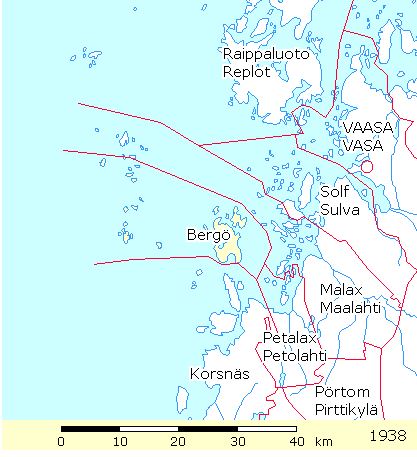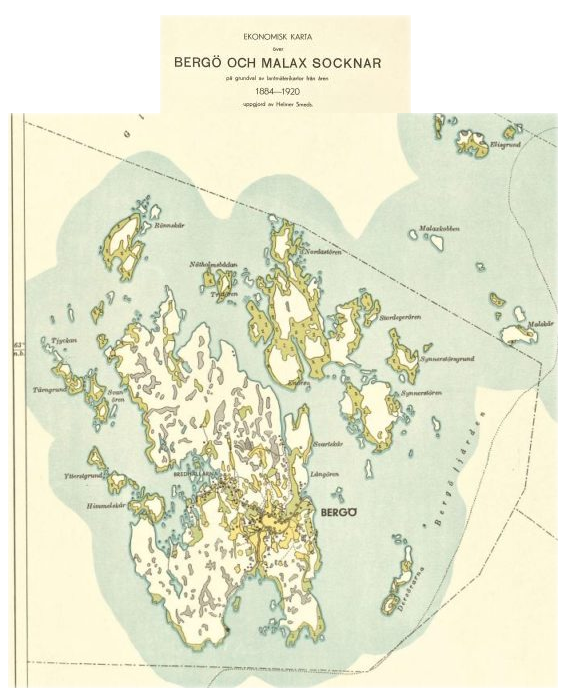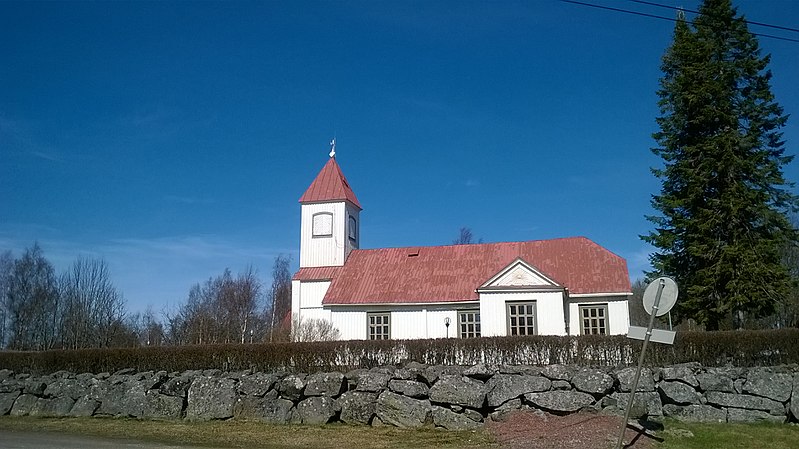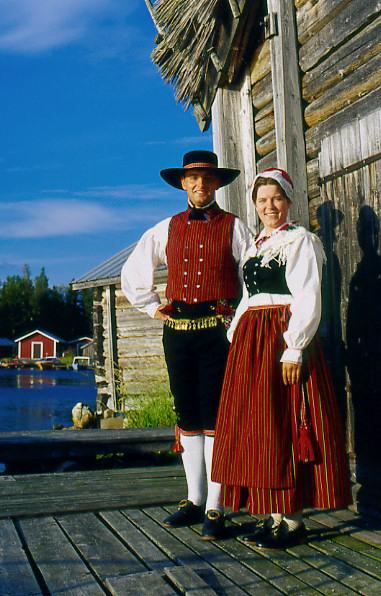Ostrobothnia
Bergö
Of Interest
Norrskär Lighthouse
The first lighthouse in Ostrobothnia was built in 1846 on Bergö. It is made of stone and brick and is 21 meters tall. It is an eight-cornered tower. The tower is black with a large band of white. To see a picture of the lighthouse click here. Then at the side navigation, click on ‘Norrskär’ in the lighthouses section.
“Hemp oil was used to light the nine oil lamps of the lighthouse. The lamps rotated by means of a clock equipped with a weight that had to be wound up twice a day. In winter no lights was needed, as there was no traffic due to the hard ice. The light keepers, however, still lived there, totally isolated. Life was hard. They got their annual salary in the autumn although most of it had to be used to buy supplies for the whole winter. Fish and seal meat was added to help make it stretch further.” 8
References
- Bergo Church image, https://commons.wikimedia.org/wiki/File:Berg%C3%B6n_kirkko.jpg
- Bergö Folk Dress image, The association Brage, Helsinki, https://www.brage.fi/sve/draktbyra/draktbyran/folkdrakter/view-163648-67
- Bergö Forsamling, http://www.xn--bergfrsamling-lmbb.fi/kyrka-och-lokaler/kyrkan/las-mer-om-bergo-kyrka
- Bergö Parish map, Doria Maps, http://urn.fi/URN:NBN:fi-fd2015-00006768
- Genealogical Society of Finland, HisKi project, Bergö parish, http://hiski.genealogia.fi/hiski/6p3rh?en+0020
- Jensen, Alicia, ‘Discovering Swedish-speaking municipalities: Malax’, Helsinki Times; November 21, 2014, , http://www.helsinkitimes.fi/themes/themes/travel/12789-discovering-swedish-speaking-municipalities-malax.html
- Karsten T.W., Svesk Bygd I Osterbotten: Nu Och Fordom; Helingfors, 1923, pages 76 -77
- Welcome to Bergö, http://www.bergo.nu/





